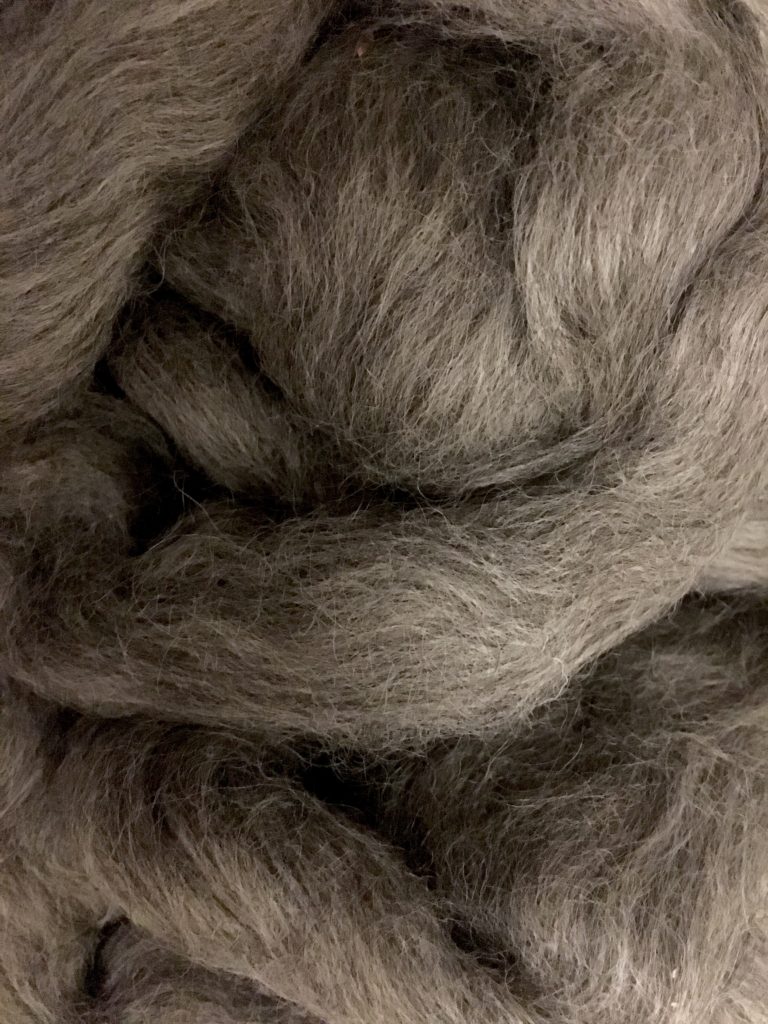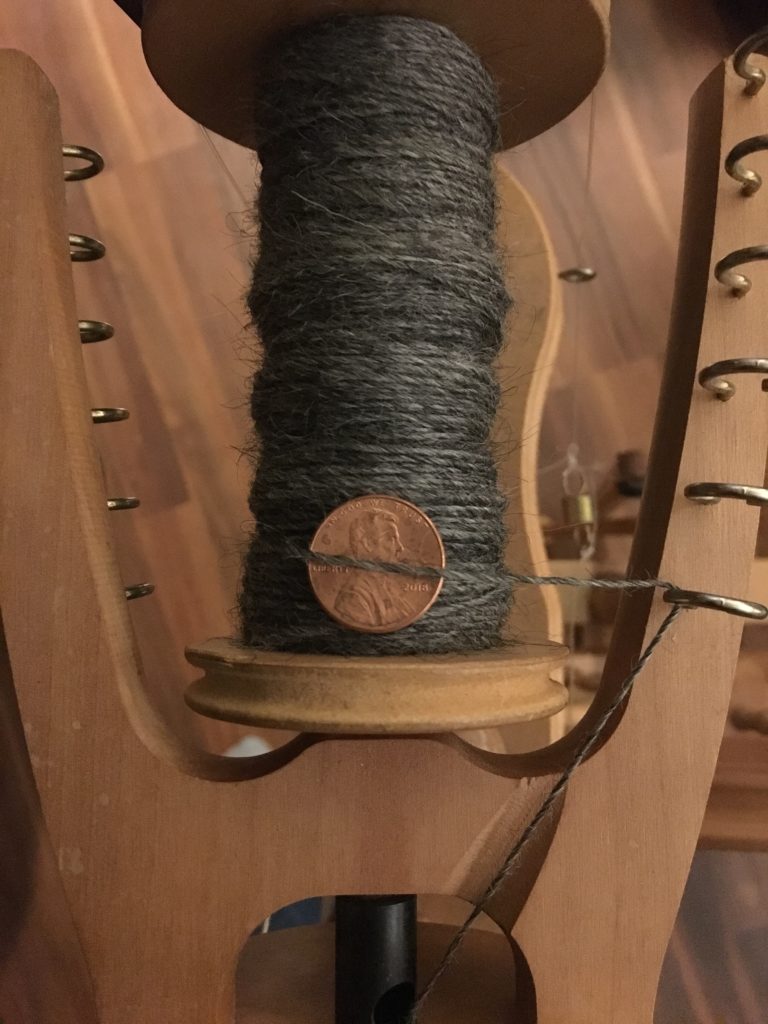Gotland
Carolina FiberFest was a couple of weeks ago in Raleigh. I really lucked out this year and was able to find fiber from a number of sheep breeds that I’d never seen before. Gotland was one of these.
The Fleece and Fiber Sourcebook describes this fiber as “an unusual wool, resembling a fine mohair or an English luster long wool more than the other Northern European Short-Tailed breeds”. This sheep was developed in Sweden in the early twentieth century from the more primitive Goth, Gute, or Gutefår breeds. The fleeces are usually in the grey range (light silvery grey to charcoal to near black), occasionally white or brown, with subtle shading, and an average weight of 5.5-11 pounds (2.5-5 kg). The staple length is 3-7 inches (7.5-18 cm), but this sheep is “often shorn more than once a year to produce a 3-4 inch (7.5-10 cm) staple” to allow it to be processed in a variety of ways. Depending on the age of the sheep and point of origin, the fiber diameter ranges from 18 microns (lambs) to 27-34 microns (North America and New Zealand) to an average of 35 microns (Britain). The locks are also described as “relatively long, high-luster, dense, astonishingly wavy – even curly – wool, and staples that feel soft and silky […] like shiny springs.” The authors also note that it can be “spun into either smooth or heavily textured yarns”.
The fiber that I purchased from Beaver Creek Yarns was already processed into top, so I can’t speak to the appearance and feel of the unprocessed locks. When I spotted it in the basket, I was initially drawn to the sheen of the fiber, but expected it to be coarse, based on the visible definition of individual fibers in the top. I was very surprised when I touched it and found it fairly soft. I had no issues with it feeling prickly on my wrists or inner forearms. The top doesn’t feel scratchy around my neck either.

The Fleece and Fiber Sourcebook also notes that the fibers can be “slick and flyaway, especially in a dry climate”. I’m not encountering this issue, but even in the late winter/early spring, the relative humidity is at least 25-30% in my house. I am, however, noticing that there are some dry spots on my fingers – the fibers are occasionally snagging there. It is also noted that it is “easier to spin into fine, rather than bulky yarns”. I noticed this as soon as I started spinning – the singles are averaging about 20 WPI. When I let it twist back on itself, the ‘singles’ are well-defined and the fiber’s sheen is apparent.

Once the singles I’m spinning are plied and I’ve set the twist, I’ll post an update on what I think of the finished yarn.